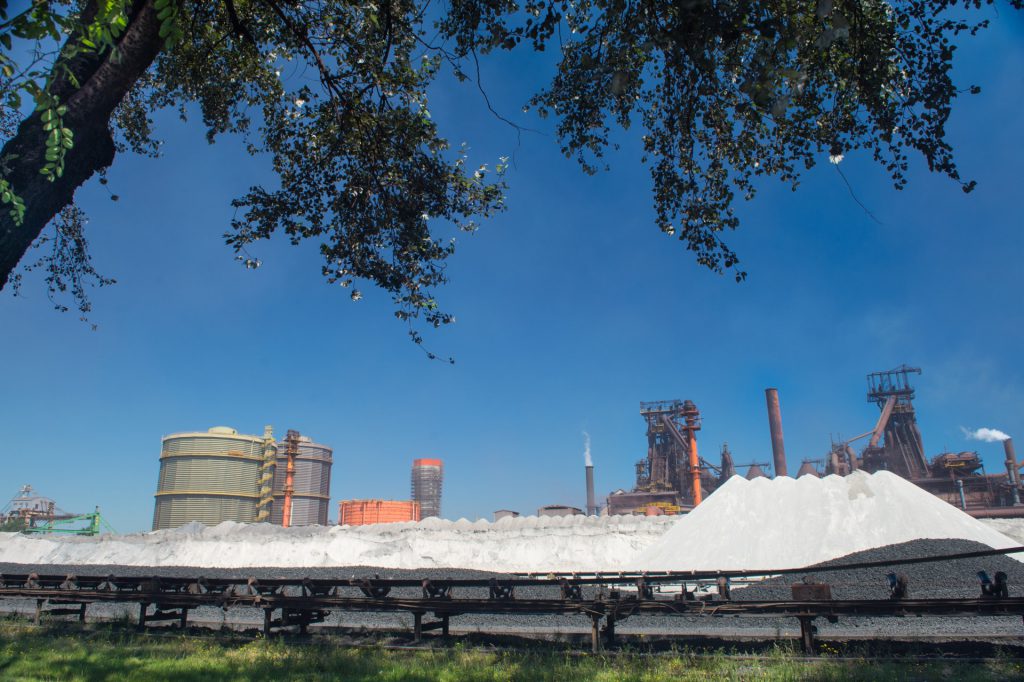-
Blast furnace
In the blast furnaces, iron ore (in the shape of sinter) is melted into liquid hot metal. Liquid hot metal is in fact pure iron, which is the ideal base for the creation of steel in the next production phase.
How does this work?

The blast furnace produces liquid hot metal by melting iron ore in a reducing atmosphere. Iron ore is composed out of iron and oxygen. By melting the iron ore in a reducing atmosphere we are able to remove the oxygen.
The raw materials used in the blast furnace, coke and sinter, are loaded into the blast furnace via weighing hoppers. At the bottom of the blast furnace, hot air with a temperature of 1.000° C to 1.200° C is blown into the oven. The hot air reacts with the coke and pulverised coal and forms a reduction gas that abstracts the oxygen from the iron ore. At the same time, heat is created which is required when melting the reduced iron ore.
As the load in the blast furnace comes down, the conversion of iron ore into liquid hot metal takes place. The liquid hot metal is collected in the hearth of the blast furnace. At regular times, it is tapped via one of the two tap holes from where it flows in torpedo ladles. These then transport the liquid hot metal to the steel shop.
In addition to liquid hot metal, the blast furnace also produces slag. This blast furnace slag floats on top of the liquid hot metal and contains the fluxes and the gangue of the iron ore. The slag is tapped, granulated by means of a high-pressure water spray, de-watered in rotating drum filters and transported for use in the construction industry.
During the production of liquid hot metal, large quantities of gas are also generated in the blast furnace containing a certain amount of dust from the blast furnace burden. We collect and purify the gas before distributing it to different users, our main user being the ENGIE power plant located nearby our Ghent’ site.
-
The production process
Before
Afterwards


